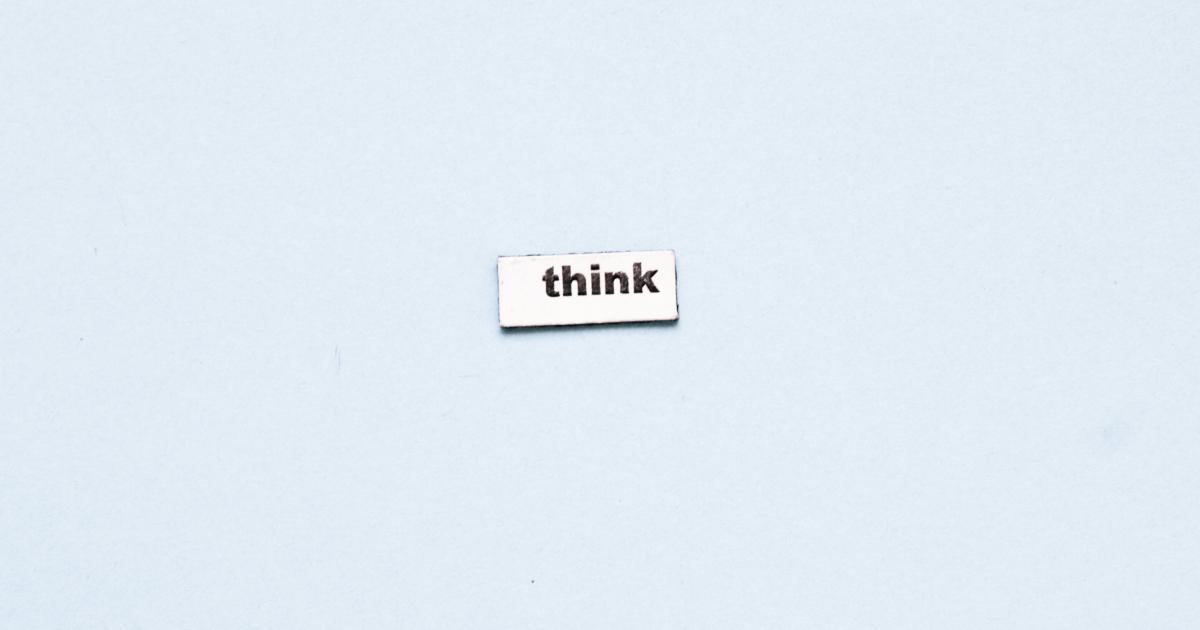10 Little-Known User Rage Click Signals to Avoid


Introduction: Navigating the Treacherous Waters of User Rage Clicks
As digital experiences have become ubiquitous in our daily lives, the phenomenon of user rage clicks has emerged as a significant challenge for designers, developers, and product managers. Rage clicks occur when a user repeatedly and forcefully clicks on an interface element, often out of frustration or confusion. These clicks, while seemingly innocuous, can serve as a canary in the coal mine, signaling deeper issues within the user experience.

Understanding and addressing these user rage click signals is crucial for creating seamless and delightful digital experiences. By identifying and mitigating the underlying causes, organizations can enhance user satisfaction, improve conversion rates, and reduce the likelihood of user abandonment.
Background: The Rise of User Rage Clicks
In the fast-paced digital landscape, users have become increasingly impatient and demand immediate responsiveness from the applications and websites they interact with. When these expectations are not met, users can quickly become frustrated, leading to the phenomenon of user rage clicks.
These rage clicks are often a manifestation of deeper issues within the user experience, such as:
Unclear or Confusing Navigation: Users may struggle to find the desired functionality or information, leading to repeated clicks in an attempt to navigate the interface.
Slow or Unresponsive System Performance: Delays in page loading, content rendering, or system responsiveness can trigger user frustration and a flurry of rage clicks.
Inconsistent or Unexpected Behavior: When interface elements or interactions do not behave as expected, users may resort to rapid clicking in an effort to elicit the desired response.
Lack of Feedback or Affordances: Without clear visual cues or feedback, users may become unsure of whether their actions have been registered, leading to repeated clicks.
Cognitive Overload: Overly complex or information-dense interfaces can overwhelm users, prompting them to click erratically in an attempt to find the desired functionality.
Understanding the root causes of these user rage click signals is the first step in creating more intuitive and user-friendly digital experiences.
Key User Rage Click Signals to Avoid
To help organizations identify and address these issues, we've compiled a comprehensive list of 10 little-known user rage click signals that should be closely monitored and mitigated.
1. Rapid Repeated Clicks on the Same Element

One of the most obvious indicators of user rage is a rapid, repeated clicking on the same interface element. This behavior suggests that the user is struggling to achieve their desired outcome and is becoming increasingly frustrated. It may signal issues such as:
- Unclear affordances: The user may not understand the functionality or purpose of the element they are clicking on.
- Unresponsive system: Delays in the system's response to user input can lead to repeated clicking as the user attempts to "force" a reaction.
- Unexpected behavior: If the element's behavior does not match the user's mental model, they may resort to rapid clicking in an attempt to elicit the desired response.
2. Erratic Cursor Movements and Clicks

Another telltale sign of user rage is erratic cursor movements and seemingly random clicks throughout the interface. This behavior often indicates that the user is struggling to navigate the interface or find the desired functionality, leading to a state of frustration and desperation.
Causes for this may include:
- Confusing information architecture: The user may be unable to quickly and easily locate the relevant information or functionality they need.
- Lack of visual hierarchy: The interface may lack clear visual cues to guide the user's attention and focus, leading to disorientation and aimless clicking.
- Unexpected or inconsistent interactions: If the interface behaves differently than the user's expectations, they may resort to haphazard clicking in an attempt to achieve their goal.
3. Excessive Scrolling and Zooming

While scrolling and zooming are natural user behaviors, excessive or frantic instances of these actions can signal underlying issues with the user experience. This may indicate that the user is struggling to find the desired content or functionality within the interface.
Potential causes include:
- Content organization and layout problems: The interface may be overly cluttered or the content may not be structured in a logical and intuitive manner, forcing the user to constantly scroll and zoom to locate the relevant information.
- Lack of visual hierarchy and emphasis: Important elements or calls-to-action may not be sufficiently prominent, leading the user to frantically search for them.
- Poorly optimized viewport and responsive design: The interface may not adapt well to different screen sizes and resolutions, causing the user to struggle with navigating the content.
4. Rapid Switching Between Interface Elements

Users who rapidly switch between various interface elements, often without pausing to engage with any one element, may be experiencing confusion or frustration with the overall experience. This behavior can signal issues such as:
- Unclear information architecture: The user may be unable to determine the purpose and relationship between different elements, leading to aimless clicking and switching.
- Lack of visual cues and affordances: If the interface does not provide clear visual indicators of an element's functionality, the user may resort to randomly trying different options.
- Overwhelming options or complexity: An interface with too many elements or options can overwhelm the user, causing them to frantically switch between different elements in an attempt to find the desired functionality.
5. Hover and Hover-Away Patterns

Closely monitoring user hover and hover-away patterns can reveal interesting insights into the user's mental model and potential frustrations. Rapid or erratic hover-and-hover-away behavior may indicate:
- Unclear hover-based interactions: If the user is unsure of what will happen when they hover over an element, they may repeatedly hover and remove their cursor in an attempt to understand the functionality.
- Unexpected or inconsistent hover behavior: When hover-based interactions do not behave as the user expects, they may resort to rapid hovering and removing the cursor in an effort to elicit the desired response.
- Lack of visual feedback: Without clear visual cues or feedback to indicate the purpose or state of a hover-based interaction, users may become frustrated and resort to rapid hover-and-hover-away patterns.
6. Extended Periods of Inactivity Followed by Sudden Bursts of Clicks

Periods of prolonged inactivity on the user's part, followed by sudden and intense bursts of clicking, can signal that the user is struggling to overcome a specific obstacle or find the desired functionality within the interface.
This behavior may indicate:
- Cognitive overload: The user may be overwhelmed by the complexity of the interface, leading to extended periods of hesitation as they try to process the information, followed by desperate clicking attempts.
- Unclear calls-to-action or next steps: If the user is unsure of the next action they should take, they may enter a state of indecision, only to eventually resort to random clicking in an effort to progress.
- Lack of feedback or confirmation: Without clear confirmation or feedback from the system, the user may become unsure of whether their actions have been registered, leading to periods of inactivity followed by sudden, intense clicking.
7. Frustrated Scrolling and Clicking at Page Edges

Users who repeatedly click or scroll at the edges of a page or interface may be experiencing frustration with the inability to access or locate the desired content or functionality.
This behavior can signal issues such as:
- Incomplete or truncated content: If the user is unable to access the full breadth of information or functionality they require, they may resort to clicking or scrolling at the edges in a desperate attempt to find what they need.
- Unclear navigation or pagination: When the user is unsure of how to access additional content or move between different sections of the interface, they may try to "force" their way through by clicking at the edges.
- Responsive design or layout problems: If the interface is not optimized for different screen sizes or devices, the user may encounter content or functionality that is cut off or difficult to access, leading to frustrated clicking and scrolling at the edges.
8. Rapid, Repeated Clicks on "Back" or "Close" Buttons

When users repeatedly and rapidly click on "Back," "Close," or other similar navigation or exit buttons, it can indicate that they are desperately trying to leave the current interface or experience.
This behavior may be a result of:
- Overwhelming or confusing interface: If the user becomes increasingly frustrated or disoriented with the current interface, they may resort to rapidly clicking the "Back" or "Close" buttons in an attempt to escape the experience.
- Unexpected or undesirable outcomes: When the user's actions lead to results they did not intend or expect, they may frantically click the "Back" button in an effort to undo their steps.
- Lack of clear exit or navigation options: If the user is unable to easily find or access the desired way to leave the current interface, they may click the "Back" or "Close" buttons repeatedly in desperation.
9. Rapidly Alternating Between Different Input Modalities

Users who rapidly switch between different input modalities, such as clicking, scrolling, and keyboard interactions, may be experiencing difficulty with the overall interface or struggling to achieve their desired outcome.
This behavior can signal issues such as:
- Inconsistent or unexpected response to input: If the interface does not consistently respond to the user's input in the way they expect, they may resort to trying different input methods in an attempt to elicit the desired reaction.
- Lack of feedback or confirmation: Without clear feedback or confirmation that the user's input has been registered, they may become unsure of whether their actions are having the intended effect, leading to rapid switching between input modalities.
- Poor integration of input modalities: If the interface does not seamlessly accommodate different input methods (e.g., mouse, keyboard, touch), the user may become frustrated and alternate between them in an effort to find the most effective way to interact with the system.
10. Furious Clicking on Non-Interactive Elements

One of the most telling signs of user rage is when users start frantically clicking on non-interactive elements within the interface, such as static text, images, or design elements that do not have any associated functionality.
This behavior can indicate:
- Unclear interactive elements: If the user is unable to readily identify which elements are interactive, they may resort to clicking on non-interactive elements in a desperate attempt to find the desired functionality.
- Unmet expectations: When the user expects a certain element to be interactive or to perform a specific action, and that expectation is not met, they may angrily click on the non-interactive element in frustration.
- Lack of visual affordances: Without clear visual cues or indicators that an element is interactive, the user may assume that any clickable element will provide the desired response, leading to furious clicking on non-interactive parts of the interface.
Challenges and Controversies
While identifying and addressing user rage click signals is crucial for improving the user experience, there are some challenges and potential controversies that organizations should be aware of:
Privacy and Ethical Concerns: Closely monitoring and analyzing user behavior data, including rage clicks, raises questions about privacy and the ethical use of such information. Organizations must ensure that they are transparent about their data collection and usage practices, and that they obtain explicit user consent where applicable.
Interpreting Contextual Nuances: Rage clicks can sometimes be context-dependent, and what may appear to be a rage click in one scenario could be a legitimate user action in another. Careful analysis and consideration of the broader user journey is necessary to avoid misinterpreting user behavior.
Balancing User Needs and Business Objectives: While addressing user rage click signals is important for improving the user experience, organizations must also balance these efforts with their business goals and objectives. Prioritizing the most impactful issues and aligning user-centric improvements with strategic priorities is crucial.
Potential Overreaction or Overcompensation: In their efforts to eliminate user rage clicks, organizations may sometimes overreact or overcompensate, leading to unnecessary changes or even a deterioration of the user experience. A measured, data-driven approach is essential to ensure that improvements are targeted and effective.
Practical Implications and Applications
By understanding and addressing the user rage click signals outlined in this article, organizations can unlock a wealth of benefits for their digital experiences:
Enhancing User Satisfaction: Identifying and resolving the underlying issues that trigger user rage clicks can lead to a more seamless and enjoyable user experience, resulting in increased satisfaction and loyalty.
Improving Conversion Rates: Eliminating frustrating user experiences and reducing the likelihood of user abandonment can directly impact key metrics such as conversion rates, retention, and overall business performance.
Optimizing User Workflows: Analyzing rage click patterns can provide valuable insights into the pain points and frictions within user workflows, enabling organizations to streamline and optimize these processes.
Informing Product Roadmaps: The insights gained from monitoring and addressing user rage click signals can inform the product development roadmap, guiding the prioritization of features and enhancements that address the most pressing user needs.
Fostering a User-Centric Culture: By making user rage click signals a key consideration in the design, development, and optimization of digital experiences, organizations can cultivate a stronger user-centric mindset throughout the entire organization.
Conclusion: Embracing the Power of User Rage Click Signals
In the ever-evolving digital landscape, user rage click signals serve as a crucial barometer for the quality and effectiveness of the user experience. By proactively identifying and addressing these indicators of user frustration, organizations can unlock a wealth of opportunities to create more intuitive, engaging, and delightful digital experiences.
As we look to the future, the ability to accurately interpret and respond to user rage click signals will become an increasingly valuable skill for designers, developers, and product teams. By embracing this understanding, organizations can position themselves at the forefront of the digital revolution, delivering experiences that not only meet but exceed the expectations of their users.
Further Reading
- Designing for Frustration: How to Handle User Rage Clicks
- The Psychology of Rage Clicks: Understanding and Preventing User Frustration
- Rage Clicks: Identifying and Resolving User Frustration
- Rage Clicks: A Powerful Indicator of User Experience Issues
- Mitigating User Rage: Strategies for Improving the User Experience